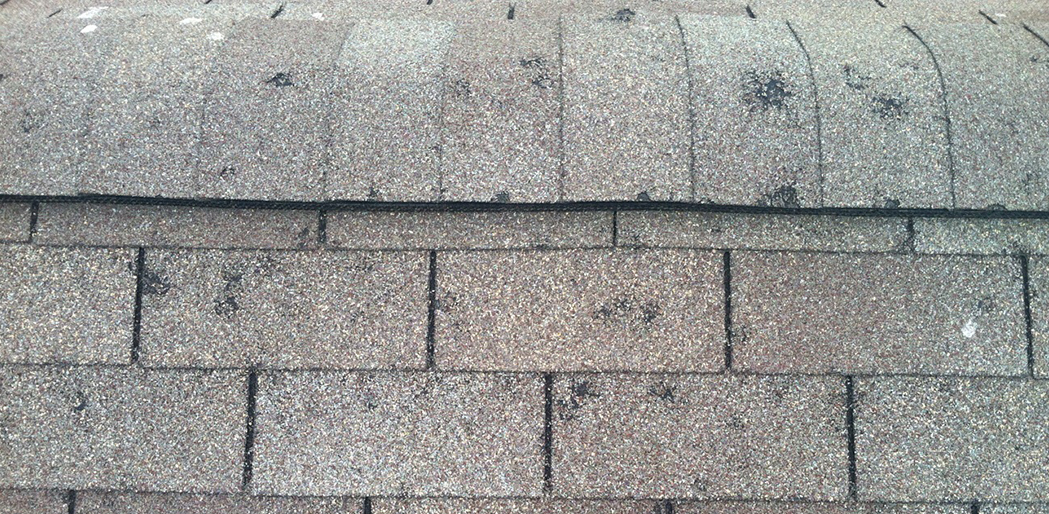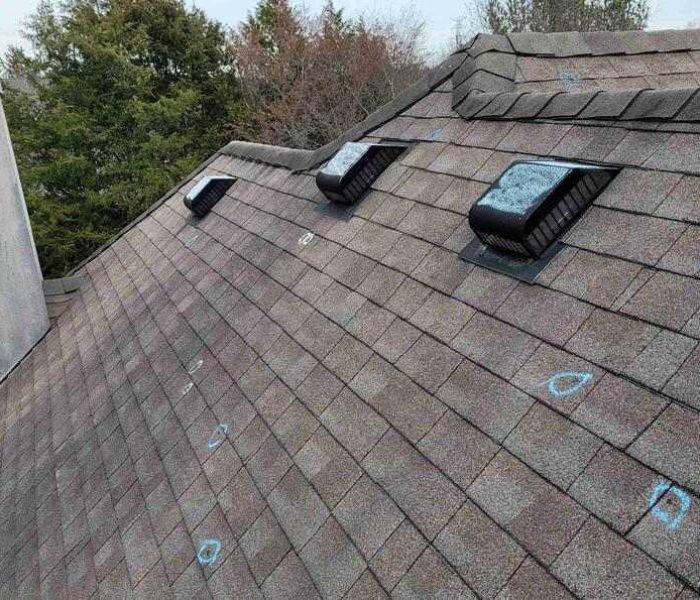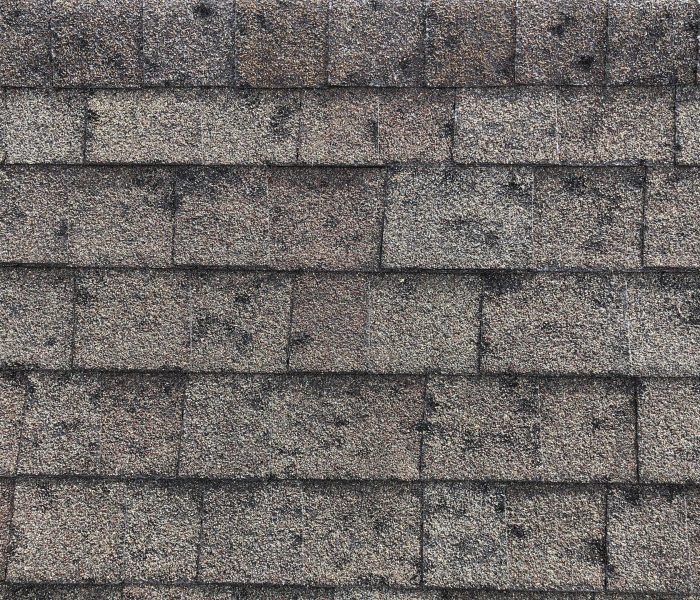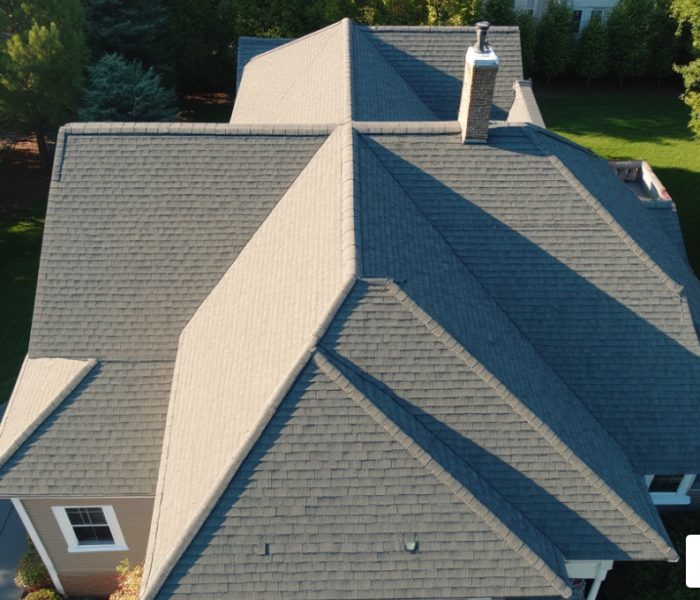What Is Hail Damage Roofing and How Can You Spot It Fast?
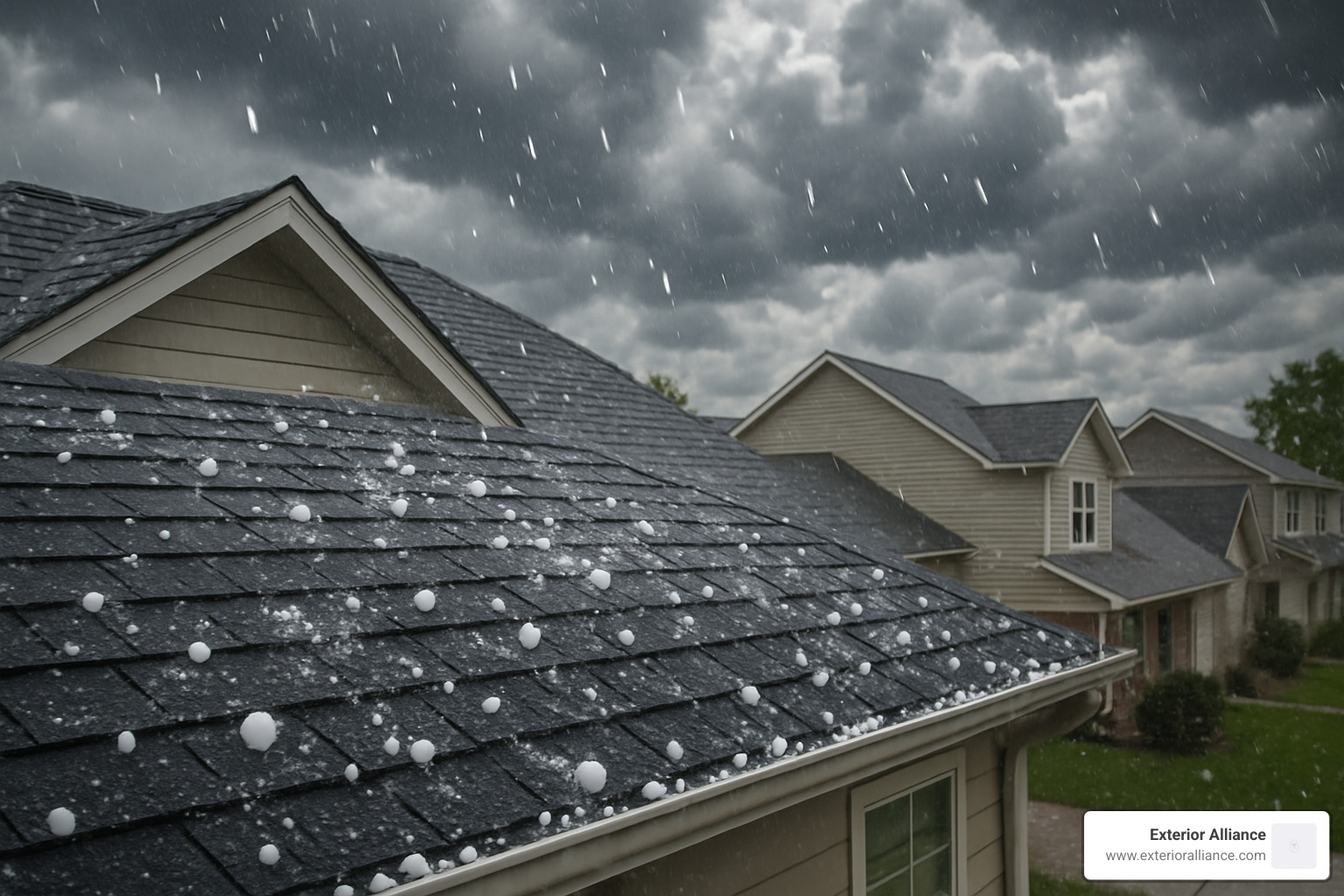
Hail damage roofing is when hailstones strike your roof, causing dents, cracks, granule loss, or even leaks. Columbus, OH, is no stranger to severe hail—last year alone, there were thousands of storm reports, costing homeowners billions nationwide.
If you’re wondering how to quickly assess your roof for hail damage roofing, here’s what you need to know:
| Step | What to Look For |
|---|---|
| Visual Ground Check | Dents on gutters, downspouts, siding, vehicles |
| Gutter Inspection | Shingle granules in gutters, bent or dented metal |
| Roof Surface Signs | Black marks, bruises, cracks, or missing shingles |
| Metal & Vents Check | Dings or “innies” and “outies” on soft metal |
| Collateral Damage | Dented AC units, mailbox, or patio furniture |
Quick Tip:
Hail damage isn’t always obvious. Even nickel-sized hail can shorten your roof’s lifespan, but it may take a trained eye to spot subtle signs like granule loss or soft spots.
“Hail damage can look like someone took a hammer to a pottery shop when tiles break.”
– Roofing industry blog anecdote
If you only have a few minutes, focus on ground-level dents and gutters first. More severe damage often needs a professional inspection for safety and insurance reasons.
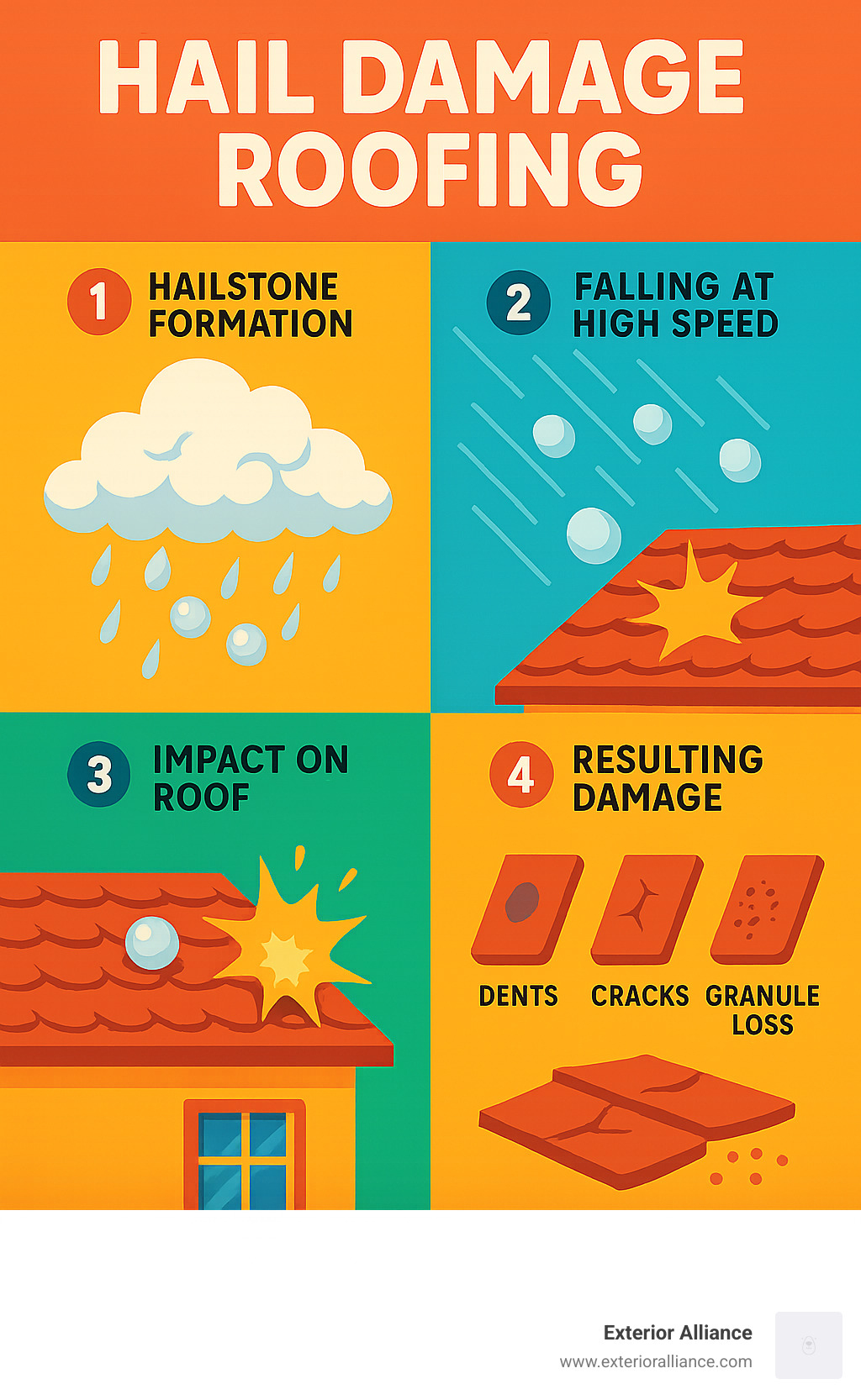
1. Understand Why Prompt Hail Damage Roofing Inspections Matter
Every year, hailstorms rack up over $1 billion in property damage across the United States, and Ohio is no exception. In 2022, there were over 4,400 severe hail events reported nationwide, with insurance claims and repair costs rising sharply. State Farm reported a $1 billion increase in hail claim costs just last year.
Why act fast?
- Hail damage roofing may look harmless at first glance, but what you don’t see can shorten your roof’s lifespan, cause leaks, and even void your roof warranty.
- Most insurance policies require you to file a claim within a year of the storm.
- The sooner you inspect, the easier it is to document the damage for your insurer and prevent further problems like mold or structural rot.
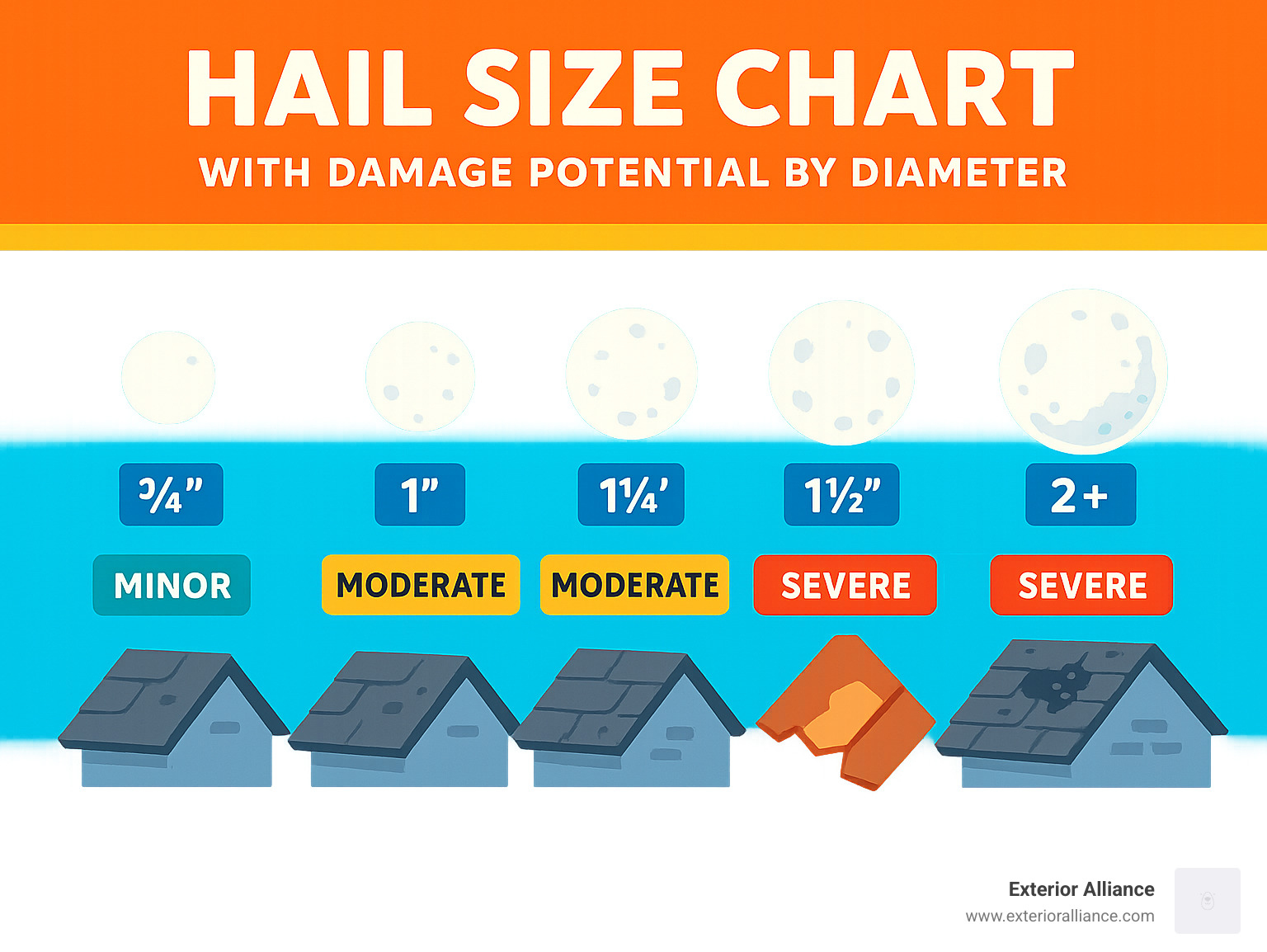
What happens when you ignore hail damage roofing?
When hail strikes, it can knock granules off asphalt shingles, exposing the underlying mat to UV rays and moisture. Over time, this leads to:
- Accelerated shingle aging and potential leaks
- Structural wood rot or mold growth in your attic
- Higher repair costs if minor damage grows into major issues
- Insurance claim denials if you wait too long
The bottom line: Even if your roof isn’t leaking today, hidden hail damage can lead to expensive repairs down the road. That’s why we always recommend a prompt, thorough inspection after every major hailstorm.
2. Start With a Safe Ground-Level Recon
Before grabbing a ladder, take a slow walk around your home. Many early signs of hail damage roofing can be spotted right from the ground—no acrobatics or superhero capes needed.
Start by looking for collateral damage. This means checking things besides your roof for hail hits. For example, dents on your gutters and downspouts are strong indicators, especially if they’re high up and unlikely to be caused by anything else. Fresh dings or spatter marks on your siding—especially on the side that faced the storm—are another giveaway.
Don’t forget to scan your car, mailbox, patio furniture, or even your A/C unit and deck. If these show new dings, chips, or splatter from the storm, chances are your roof took a beating too. You may also notice that hail tends to strike randomly, not in straight lines. This “patternless” damage is a classic hail signature and helps separate it from mechanical or installation issues.
Take a moment to notice the direction of the worst damage. Hailstones usually team up with wind, so you’ll often find the most evidence on one or two sides of your house. If you see shiny spots on soft metals—where dirt or oxidation has been knocked away—that’s a sure sign of recent hail activity, even if there’s no dent.
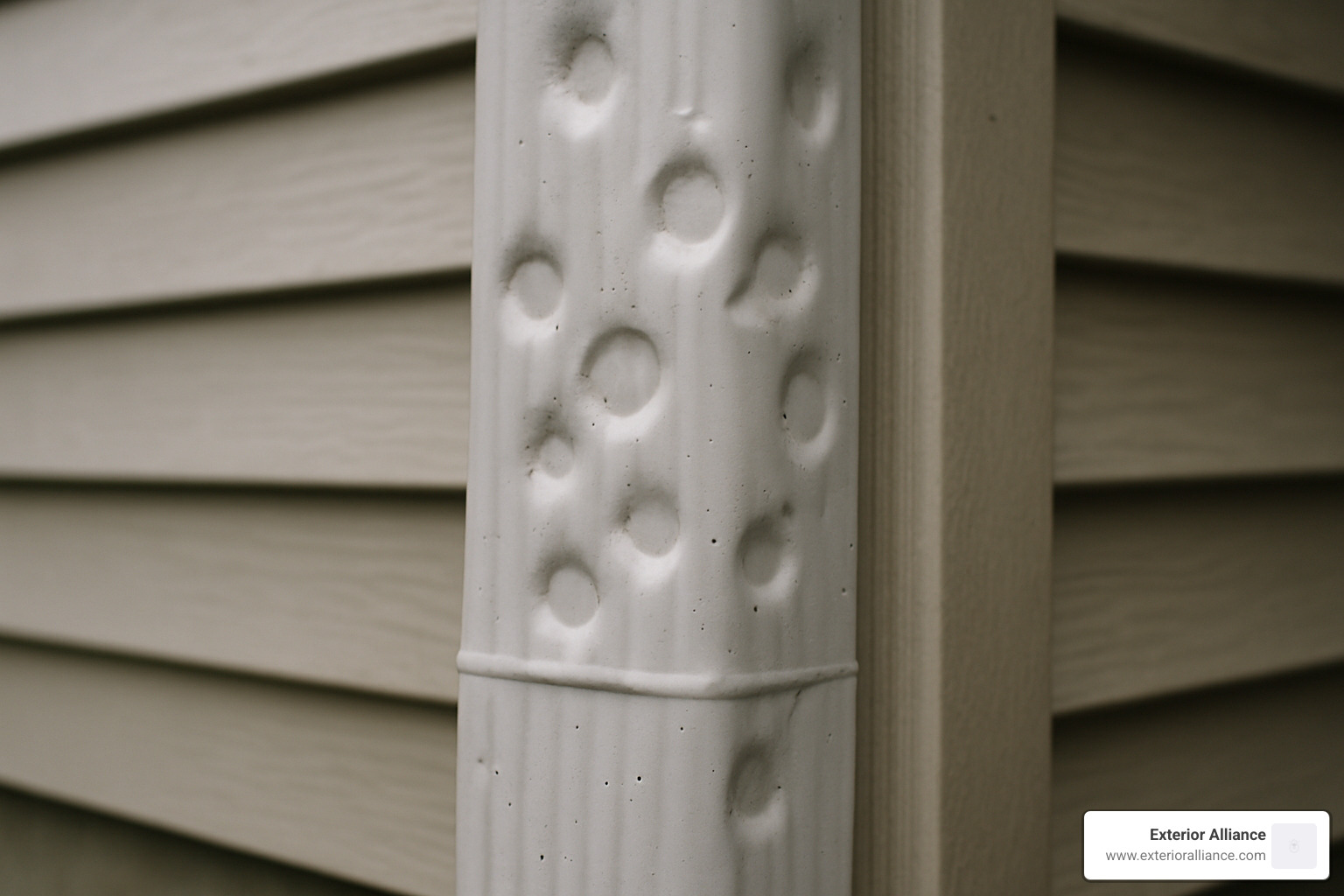
Pro Tip:
Spatter marks on metal (like downspouts and mailbox tops) can be easier to spot than dents. If you see them, it’s proof the hailstorm was recent—even if it didn’t leave a crater.
If you do feel comfortable getting a closer look, set up your ladder carefully and stick to examining gutters and lower roof edges only. Your safety comes first—never walk on the roof itself unless you’re a pro. A trained roofing inspector (like those at Exterior Alliance) has the right tools and know-how to check for hidden damage without risking a fall—or causing more harm to your shingles.
By starting with a thorough ground-level recon, you’ll gather valuable clues that help confirm whether your home has been hit by hail damage roofing, and give you a head start should you need to file an insurance claim or call in a professional for a deeper look.
3. Check Gutters, Flashing, and Vents Up Close
When it comes to hail damage roofing, some of the most telling clues are waiting right at the edge of your roof—on your gutters, flashing, and vents. These parts of your home are usually made of softer metals like aluminum, copper, or steel. That means they’ll often show hail hits even before your shingles do.
As you check your gutters, look closely for small, rounded dents or dings—sometimes called “innies” (little dips) and “outies” (tiny bumps on the underside). Hail makes its mark randomly, so these dents won’t line up in neat rows.
Another giveaway? Shingle granules collecting in your gutters. After a hailstorm, it’s common to spot a pile of black or sandy grit. This is the protective coating off your shingles, and its loss is a surefire sign that hail has done some damage up top.
Clogged or sagging gutters are another red flag. If your gutters are stuffed full of granules or overflowing after a rain, hail may have knocked loose more than just a few pebbles. Keep an eye out for water stains on the fascia or soffits under your roof’s edge—these mean water is going where it shouldn’t, often because of hail-related blockages or leaks.
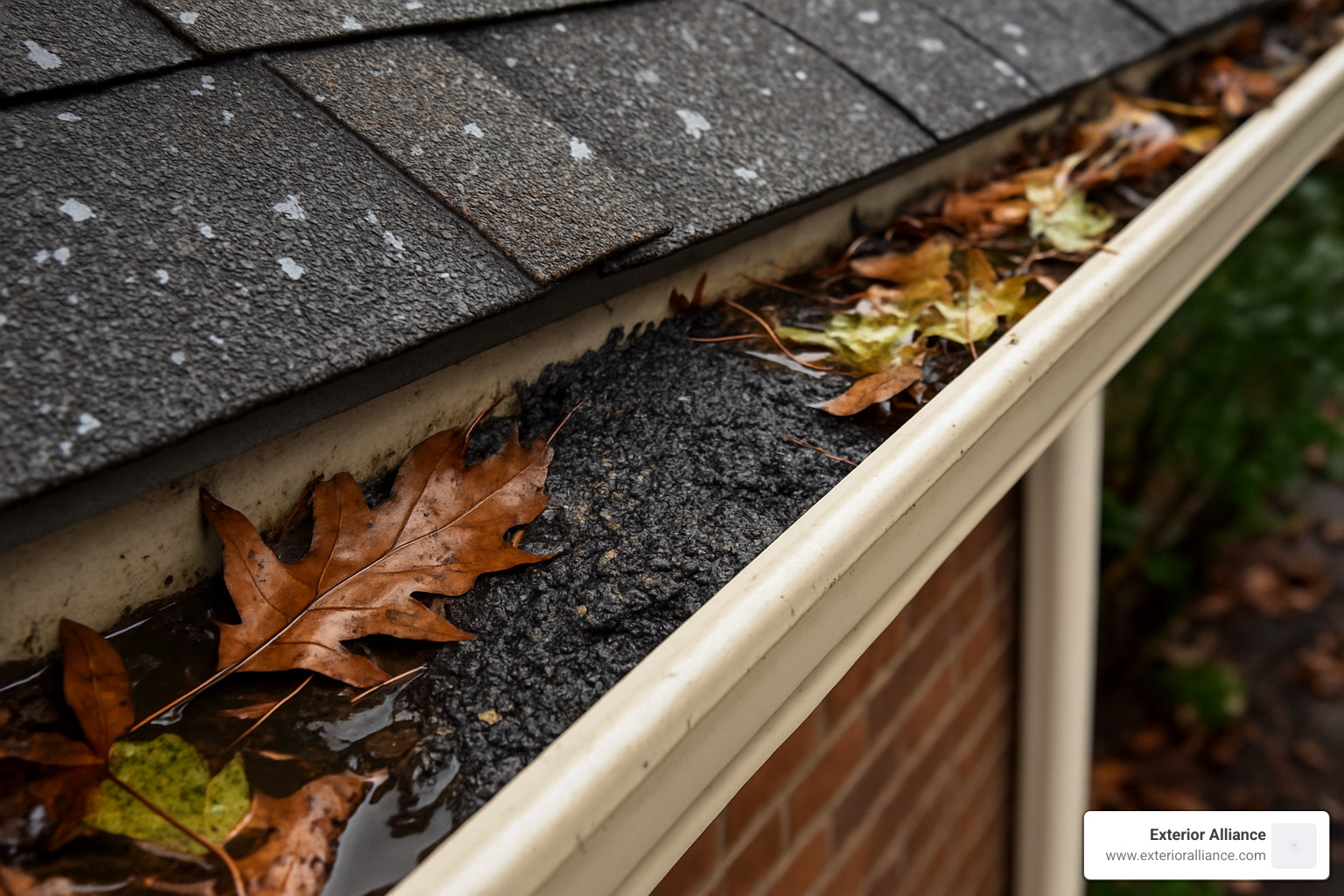
Distinguish hail dents from mechanical damage
Not every dent and ding is due to hail—even if it shows up right after a storm. It’s important to know the difference so you can accurately document hail damage roofing for your insurance.
A good rule of thumb is the no-scratches rule: hail dents are usually smooth and don’t have scrapes, sharp lines, or missing paint. If you see creases, scratches, or a pair of dents spaced about 16 inches apart, that’s probably from a ladder or someone’s tools, not a storm.
Hail hits also appear in a truly random pattern, never in straight lines. Hail falls at odd angles, pushed by unpredictable winds. If your gutters or flashing are aluminum, they’ll show dents easily, while vinyl may crack instead, and steel can take a bit more of a beating before showing marks.
If you’re ever in doubt, snap a few photos and reach out to a professional for a second opinion. The team at Exterior Alliance has trained eyes for this kind of thing—and can help you separate true hail evidence from regular wear and tear. This simple step can make your insurance process much smoother and keep your home protected for years to come.
4. Examine Roofing Materials for Specific Damage Signs
Here’s where things get interesting—different roofing materials react to hail like different personalities react to criticism. Some show every little ding, while others hide damage until it’s too late.
The key is knowing what to look for on your specific roof type. Hail damage roofing signs vary dramatically depending on whether you’ve got asphalt shingles, metal panels, wood shakes, or tile.
| Material | Hail Damage Signs |
|---|---|
| Asphalt Shingles | Black “bruises,” missing granules, soft spots, exposed fiberglass mat, cracks |
| Wood Shakes/Shingles | Sharp splits (brown/orange), impact dents along splits, splintering |
| Metal Roofing | Dents (“oil canning”), dings on panels or seams, chipped paint, distorted fasteners |
| Tile/Slate | Chipped or broken tiles, cracked glaze, exposed underlayment, “pottery shop” look |
Don’t forget about ridge caps—those peaked sections running along your roof’s spine. They take the most direct hits and often show damage first.
Hail damage roofing red flags on asphalt and composition shingles
Asphalt shingles are like the introverts of roofing materials—they suffer in silence until the damage becomes obvious. Look for black “divots” or bruises where granules have been knocked clean off. These spots look darker than the surrounding shingle and feel rough to the touch.
The real telltale sign is when you see shiny or exposed fiberglass mat peeking through. That’s the skeleton of your shingle showing, and it means the protective granule layer is gone. Once UV rays hit that exposed mat, your shingle’s days are numbered.
Try the gentle press test on suspicious spots. If an area feels soft or spongy when you apply light pressure, that’s a hail bruise. Healthy shingles feel firm and solid.
Watch for cracks or splits running through the shingle body, and check if the self-seal strip (that line of adhesive) looks damaged. When hail weakens this strip, your shingles can lift and blow off in future storms.
Hail clues on metal, wood, and tile roofs
Metal roofs are the drama queens—they show every impact with pride. Look for round dents or what we call “oil can” marks where the metal has been pushed in and out. Severe hail can even chip paint or loosen seams and fasteners.
Wood shakes tell their hail story through splintered or split wood. Fresh hail damage creates sharp, clean splits with that bright orange or brown color of new wood showing through. You’ll often see impact dents right along these splits. Don’t confuse these with old, weathered splits that look gray and rounded—those are from age, not hail.
Tile and slate roofs after a hailstorm can look like, well, someone took a hammer to a pottery shop. You’ll see chipped corners, broken tiles, or shattered glaze. When tiles crack completely, they often expose the underlayment beneath—a sure sign you need professional help fast.
The good news? Most of these signs are pretty obvious once you know what you’re looking for. The bad news? If you’re seeing obvious damage, there’s probably more hiding in places you can’t easily check.
5. Document, Measure, and Call in the Pros
So, you’ve spotted possible hail damage roofing—now it’s time to make everything official. Think of this step as building your case, whether you plan to file an insurance claim or just want peace of mind.
Start by taking clear, close-up photos of every sign of damage you find. Snap pictures of your roof, gutters, siding, vehicles, and even the patio furniture if you spot dents or dings. The more angles and context you can capture, the better.
Next, write down storm details while they’re still fresh in your mind. Note the date and time the hailstorm hit, what size the hailstones were (if you saw or collected any), and try to estimate the wind speed if you remember. If you had the presence of mind to pop a few hailstones in the freezer, pull them out and photograph them next to a ruler or a coin—insurance adjusters love this kind of proof.
As you walk your property, jot down where each type of damage appeared. A simple sketch or a list by location works fine. These details help you—and your insurance company—see the full picture of the storm’s impact.

If you’re unsure about what you’re seeing, or if your roof is particularly steep or tricky, don’t hesitate to call in the professionals. A reputable, BBB-accredited, and insured company like Exterior Alliance can safely handle the inspection, collect the right documentation, and provide a detailed assessment for your insurance claim—or just for your own records. Plus, letting experienced pros walk your roof keeps you safe on the ground where you belong.
Navigating the insurance claim process smoothly
Dealing with insurance doesn’t have to be stressful. Start by reading your policy and checking if hail is covered under wind/hail peril (most policies do, but the deductible and limits can vary). Know the difference between Actual Cash Value (ACV)—which pays out the roof’s depreciated value—and Replacement Cost Value (RCV), which covers the full cost after proof of repairs.
File your claim as soon as possible, since most insurers have a one-year window after the storm. When the adjuster visits, share your photos, hailstone measurements, and notes. Walk through the property together and don’t shy away from asking questions. If something seems off, a second opinion from a trusted contractor is always smart.
Finally, always get a detailed, written estimate from a local, trusted contractor. (Here’s more about our roofing services and hail expertise to get you started.)
And here’s a pro tip: If you’re ready to upgrade, consider impact-resistant Class 4 shingles (they meet UL 2218 standards). Not only do they stand up to future hail, but some insurers offer discounts for them.
Curious about how hail forms and why it can be such a menace to roofs? Check out this scientific overview for the full story.
Whether you’re documenting your hail damage roofing or ready to call in the pros, taking these steps now can save you time, money, and a lot of stress down the road.
Frequently Asked Questions about Hail Damage Roofing
Can small (¾-1″) hail really damage my roof?
Absolutely! This is one of the biggest misconceptions homeowners have about hail damage roofing. You don’t need golf ball-sized hail to cause real problems.
Even those seemingly harmless ¾-inch hailstones—about the size of a penny—can knock precious granules off your asphalt shingles. Think of granules as your roof’s sunscreen. Once they’re gone, UV rays start cooking the underlying material, which shortens your roof’s lifespan significantly.
On soft metals like aluminum gutters or copper flashing, small hail creates those telltale “innies and outies” we mentioned earlier. And if you have tile or slate? Even nickel-sized hail can chip the protective glaze, letting moisture seep in where it doesn’t belong.
The tricky part is that this damage often looks minor at first glance. But over months and years, those small impacts add up to big problems—and big repair bills.
How soon after a storm should I schedule an inspection?
The sooner, the better. We always tell Columbus homeowners to schedule their hail damage roofing inspection within a week of any significant hailstorm.
Here’s why timing matters so much: Fresh damage is easier to document and distinguish from normal wear and tear. Insurance adjusters are trained to spot the difference, but after several months of Ohio weather, that distinction gets blurry.
Most insurance policies give you up to one year to file a claim, but don’t wait that long. Storm season brings multiple weather events, and you want to clearly tie your damage to the specific storm that caused it.
Plus, if you’ve got hidden damage that’s letting moisture in, every day you wait is another day for mold or rot to take hold in your attic. Trust us—you don’t want to find that problem six months down the road.
When is a full roof replacement necessary after hail?
This is the million-dollar question, isn’t it? The answer depends on how widespread and severe the damage is across your entire roof system.
Full replacement becomes necessary when you have widespread shingle damage—think cracked or missing shingles scattered across multiple roof sections, exposed fiberglass mat, or compromised self-seal strips that can’t keep your shingles properly attached.
For metal roofs, severe denting or “oil-canning” across large areas often means replacement. The same goes for tile or slate roofs with extensive cracking or breakage. As one of our team members likes to say, “When your tile roof looks like someone took a baseball bat to a pottery shop, it’s replacement time.”
Leaks are always a red flag. If hail damage has created pathways for water to enter your home, we typically recommend replacement over patching—especially if the damage is in multiple locations.
The good news? We’ll always give you an honest assessment and explain all your options. Sometimes strategic repairs can buy you time, and sometimes a full replacement is the most cost-effective long-term solution. Every situation is unique, and that’s exactly why professional inspection matters so much.
Conclusion
Figuring out hail damage roofing doesn’t have to keep you up at night. With these five straightforward steps, you can spot everything from obvious dents to sneaky granule loss that might otherwise go unnoticed for months.
The key is acting quickly after a storm hits. Even if your roof looks fine from the driveway, those innocent-looking hailstones may have done more damage than meets the eye. Documenting everything early protects both your home and your wallet when it comes time to file that insurance claim.
At Exterior Alliance, we’ve seen it all—from penny-sized hail that barely leaves a mark to golf ball-sized ice chunks that turn roofs into Swiss cheese. As your locally-owned, BBB-accredited neighbors here in Dublin, Ohio, we understand how stressful storm damage can be. That’s why our experienced, insured team takes the guesswork out of inspections and insurance claims.
Don’t wait for that first drip through your ceiling. By then, what started as minor hail damage has often turned into a much bigger (and more expensive) problem. A quick professional inspection now can save you thousands down the road.
Ready to get that peace of mind? We’re here to help with a free, no-obligation inspection. Plus, if you’re thinking ahead to the next storm season, ask us about impact-resistant Class 4 shingles—they’re like armor for your roof.
Learn more about our roofing services and let’s make sure your home is ready for whatever Mother Nature throws our way.
Hail yeah! You’ve got this.

